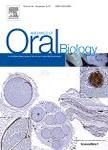版权所有:内蒙古大学图书馆 技术提供:维普资讯• 智图
内蒙古自治区呼和浩特市赛罕区大学西街235号 邮编: 010021

作者机构:WELLINGTON SCH MED DENT RES GRP WELLINGTON NEW ZEALAND
出 版 物:《ARCHIVES OF ORAL BIOLOGY》 (口腔生物学文献集)
年 卷 期:1997年第42卷第7期
页 面:475-480页
核心收录:
主 题:plaque pH critical pH cariogenic potentials apatite solubility computer program
摘 要:A computer program was written in Visual Basic (Microsoft(R)) to calculate (a) the area between a plaque pH curve (as seen after a sucrose rinse) and either a resting pH (around pH 7) or a critical pH value (around 5.5) above at least parts of the pH curve;(b) the solubility of apatite at the pH values in plaque;(c) the area between the plaque pH solubility curve and the apatite solubility at the resting pH/critical pH;(d) the area between plaque cH(+) curve and the cH(+) value at resting pH/ critical pH;and (e) the area between a plaque pH curve and a cut-off pH value below the curve, e.g. pH 3. It was found that because both the cH(+) and the solubility of apatite increased logarithmically with a pH drop, the two latter area functions (d, e) were basically different from those based directly on pH curves. Thus, pH changes around the resting pH value had little effect on areas calculated from concentrations of H+ and solubility. In contrast, a small pH change around pH 4 had a strong impact on both demineralization potential and areas based on cH(+). Also, because of the logarithmic nature, demineralization potentials were generally large in comparison to remineralization potentials, a point that has hilherto received little attention. (C) 1997 Elsevier Science Ltd.